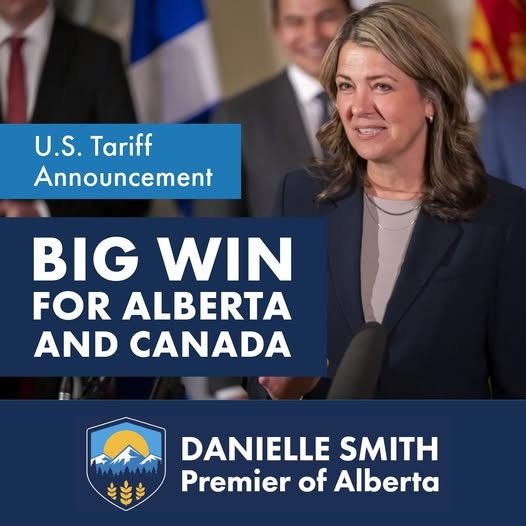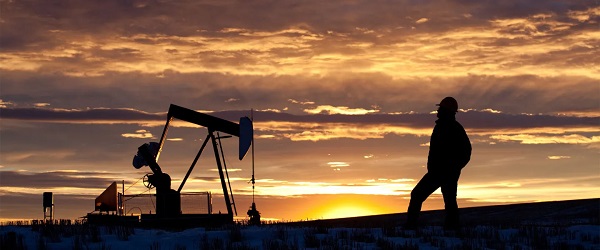Alberta
Alberta won the energy lottery

From the Frontier Centre for Public Policy
Some people blamed a small handful of natural gas plants being out of operation. Which is a greater concern – two of 87 gas fired units being down, or 88 of 88 wind and solar farms being down at the same time?
Alberta won the energy lottery millions of years ago. I’m not talking scratchers, but the Powerball. You know, the big American lottery that every so often is over a billion dollars?
Except Alberta’s winnings are much, much larger than that.
So why is it the weekend of Jan. 12-15, the jurisdiction that has more oil, gas and coal than God, because God gave all his to Alberta, was forced to beg its neighbours if they could spare a megawatt?
Because that’s what happened. It got so desperate the night of Saturday, Jan. 13, that the neighbours did not have another megawatt to spare. The Alberta Electric System Operator (AESO) and the government of Alberta sent out an emergency alert to every cellphone and TV screen in the province, calling on people to shut off everything from stoves to bathroom fans, as well as unplug block heaters and electric vehicles.
The only way this could happen is complete and utter incompetence at the top. It started with Rachel Notley, but Jason Kenney didn’t seem to do much to reverse her moves. Only Danielle Smith seems to have finally said, “No more!”
Former Alberta premier Rachel Notley’s push to get rid of coal as soon as possible and build as much wind and solar is a prime example of incompetence. While most coal plants converted to natural gas, not all units did, and hundreds of megawatts of cheap, reliable power were lost. Meanwhile, in the last two years Alberta’s wind and solar basically doubled, projects that mostly got their start under Notley. And yet there were moments during the weekend where both wind and solar hit zero output, sometimes at same time. Wind and solar’s theoretical capacity of 6,131 megawatts was a big fat zero.
And yet when Notley announced her departure as leader of the NDP on Jan. 16, she put out a video proclaiming the elimination of coal-fired power and kickstarting renewables among her greatest accomplishments.
Some people blamed a small handful of natural gas plants being out of operation. Which is a greater concern – two of 87 gas fired units being down, or 88 of 88 wind and solar farms being down at the same time, as happened the morning of Jan. 14? Indeed, the vast majority of the 87 gas units and 2 coal units were indeed providing nearly all of Alberta’s power throughout the weekend.
Those four days saw the AESO issue four “grid alerts” in a row. The second one was a much closer-run thing. As a last resort, they put all the grid-scale batteries into play, and those batteries were running out of juice after just an hour. The contingency reserve went to effectively zero.
If the province had not issued its emergency alert, the AESO since reported they were within a half hour of calling for rotating blackouts.
Thankfully, it did work. But what about next time?
The next step was rotating blackouts, and, if that didn’t work, major load shedding. And if that wasn’t enough, a replay of Texas, February, 2021, when 246 died. Except there would be more bodies, because it’s a hell of a lot colder here.
Lessons
There are some lessons from that weekend, and especially Saturday:
- Wind and solar totally and utterly fail when we need power the most.
- Do NOT expect your neighbour to be able to help you out. Often they can, and do. But as we saw Jan. 13, when your boat is sinking, your neighbour’s may be sinking faster. This was evident by the small amount of power BC sent Alberta. They routinely send 3x that. Montana was sending effectively nothing. And even though Saskatchewan was maxed out in sending what we had, it was not enough to bail out Alberta. Interties are good in many ways, but they must not be entirely relied upon.
- As a result, each jurisdiction must ensure it has ample supply within its own borders and control. And that includes enough dispatchable power to backfill every single megawatt of wind and solar, plus the possible loss of one of its baseload units. That 4 per cent contingency reserve is really not enough.
- If Alberta did go into rotating blackouts:
- What would have happened if that half hour turned out into half a day, or longer, with the temperature at -35 C as it was in Calgary? How many lives might be on the line? What would the property loss be, from things like frozen pipes?
- Whose head would the public be calling for on Monday morning? Oh wait, there was a fourth grid alert that morning.
- Alberta has more than five million vehicles registered. What would have happened if five million EVs were all plugged in that weekend?
- We cannot, we must not, allow this to happen here in Saskatchewan, or again in Alberta. But yet SaskPower keeps saying we’re going to build an additional 3,000 megawatts of wind and solar. We are on Alberta’s path. Alberta already has 6,131 megawatts of wind and solar. How’s that working out for them? Friday night – 6 megawatts. Saturday night – 90. Sunday morning, zero.
Fossil fuels account for up to 94 per cent of Alberta’s and 89 per cent of Saskatchewan’s power on any given day. We cannot, must not, allow ourselves to think any amount of wind and solar can keep us alive when the temperatures hit -35 C. That weekend in Alberta proved it.
Brian Zinchuk is editor an owner of Pipeline Online and occasional contributor to the Frontier Centre for Public Policy. He can be reached at [email protected].
Alberta
Big win for Alberta and Canada: Statement from Premier Smith

Premier Danielle Smith issued the following statement on the April 2, 2025 U.S. tariff announcement:
“Today was an important win for Canada and Alberta, as it appears the United States has decided to uphold the majority of the free trade agreement (CUSMA) between our two nations. It also appears this will continue to be the case until after the Canadian federal election has concluded and the newly elected Canadian government is able to renegotiate CUSMA with the U.S. administration.
“This is precisely what I have been advocating for from the U.S. administration for months.
“It means that the majority of goods sold into the United States from Canada will have no tariffs applied to them, including zero per cent tariffs on energy, minerals, agricultural products, uranium, seafood, potash and host of other Canadian goods.
“There is still work to be done, of course. Unfortunately, tariffs previously announced by the United States on Canadian automobiles, steel and aluminum have not been removed. The efforts of premiers and the federal government should therefore shift towards removing or significantly reducing these remaining tariffs as we go forward and ensuring affected workers across Canada are generously supported until the situation is resolved.
“I again call on all involved in our national advocacy efforts to focus on diplomacy and persuasion while avoiding unnecessary escalation. Clearly, this strategy has been the most effective to this point.
“As it appears the worst of this tariff dispute is behind us (though there is still work to be done), it is my sincere hope that we, as Canadians, can abandon the disastrous policies that have made Canada vulnerable to and overly dependent on the United States, fast-track national resource corridors, get out of the way of provincial resource development and turn our country into an independent economic juggernaut and energy superpower.”
Alberta
Energy sector will fuel Alberta economy and Canada’s exports for many years to come

From the Fraser Institute
By any measure, Alberta is an energy powerhouse—within Canada, but also on a global scale. In 2023, it produced 85 per cent of Canada’s oil and three-fifths of the country’s natural gas. Most of Canada’s oil reserves are in Alberta, along with a majority of natural gas reserves. Alberta is the beating heart of the Canadian energy economy. And energy, in turn, accounts for one-quarter of Canada’s international exports.
Consider some key facts about the province’s energy landscape, as noted in the Alberta Energy Regulator’s (AER) 2023 annual report. Oil and natural gas production continued to rise (on a volume basis) in 2023, on the heels of steady increases over the preceding half decade. However, the dollar value of Alberta’s oil and gas production fell in 2023, as the surging prices recorded in 2022 following Russia’s invasion of Ukraine retreated. Capital spending in the province’s energy sector reached $30 billion in 2023, making it the leading driver of private-sector investment. And completion of the Trans Mountain pipeline expansion project has opened new offshore export avenues for Canada’s oil industry and should boost Alberta’s energy production and exports going forward.
In a world striving to address climate change, Alberta’s hydrocarbon-heavy energy sector faces challenges. At some point, the world may start to consume less oil and, later, less natural gas (in absolute terms). But such “peak” consumption hasn’t arrived yet, nor does it appear imminent. While the demand for certain refined petroleum products is trending down in some advanced economies, particularly in Europe, we should take a broader global perspective when assessing energy demand and supply trends.
Looking at the worldwide picture, Goldman Sachs’ 2024 global energy forecast predicts that “oil usage will increase through 2034” thanks to strong demand in emerging markets and growing production of petrochemicals that depend on oil as the principal feedstock. Global demand for natural gas (including LNG) will also continue to increase, particularly since natural gas is the least carbon-intensive fossil fuel and more of it is being traded in the form of liquefied natural gas (LNG).
Against this backdrop, there are reasons to be optimistic about the prospects for Alberta’s energy sector, particularly if the federal government dials back some of the economically destructive energy and climate policies adopted by the last government. According to the AER’s “base case” forecast, overall energy output will expand over the next 10 years. Oilsands output is projected to grow modestly; natural gas production will also rise, in part due to greater demand for Alberta’s upstream gas from LNG operators in British Columbia.
The AER’s forecast also points to a positive trajectory for capital spending across the province’s energy sector. The agency sees annual investment rising from almost $30 billion to $40 billion by 2033. Most of this takes place in the oil and gas industry, but “emerging” energy resources and projects aimed at climate mitigation are expected to represent a bigger slice of energy-related capital spending going forward.
Like many other oil and gas producing jurisdictions, Alberta must navigate the bumpy journey to a lower-carbon future. But the world is set to remain dependent on fossil fuels for decades to come. This suggests the energy sector will continue to underpin not only the Alberta economy but also Canada’s export portfolio for the foreseeable future.
-

 2025 Federal Election2 days ago
2025 Federal Election2 days agoPM Carney’s Candidate Paul Chiang Steps Down After RCMP Confirms Probe Into “Bounty” Comments
-

 2025 Federal Election2 days ago
2025 Federal Election2 days agoLiberal MP Paul Chiang Resigns Without Naming the Real Threat—The CCP
-

 2025 Federal Election2 days ago
2025 Federal Election2 days agoFight against carbon taxes not over yet
-

 2025 Federal Election2 days ago
2025 Federal Election2 days agoMark Carney refuses to clarify 2022 remarks accusing the Freedom Convoy of ‘sedition’
-

 Crime1 day ago
Crime1 day agoFirst Good Battlefield News From Trump’s Global War on Fentanyl
-

 Automotive1 day ago
Automotive1 day agoElectric cars just another poor climate policy
-

 Energy1 day ago
Energy1 day agoWhy are Western Canadian oil prices so strong?
-

 2025 Federal Election10 hours ago
2025 Federal Election10 hours agoWEF video shows Mark Carney pushing financial ‘revolution’ based on ‘net zero’ goals









